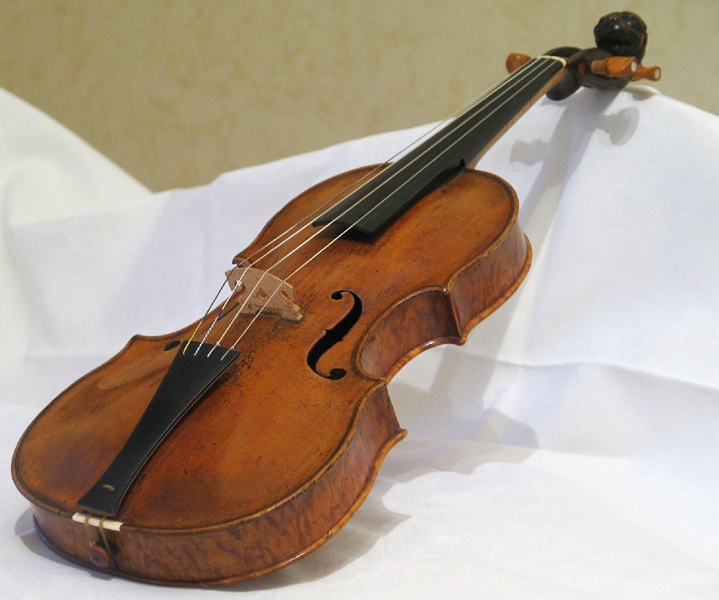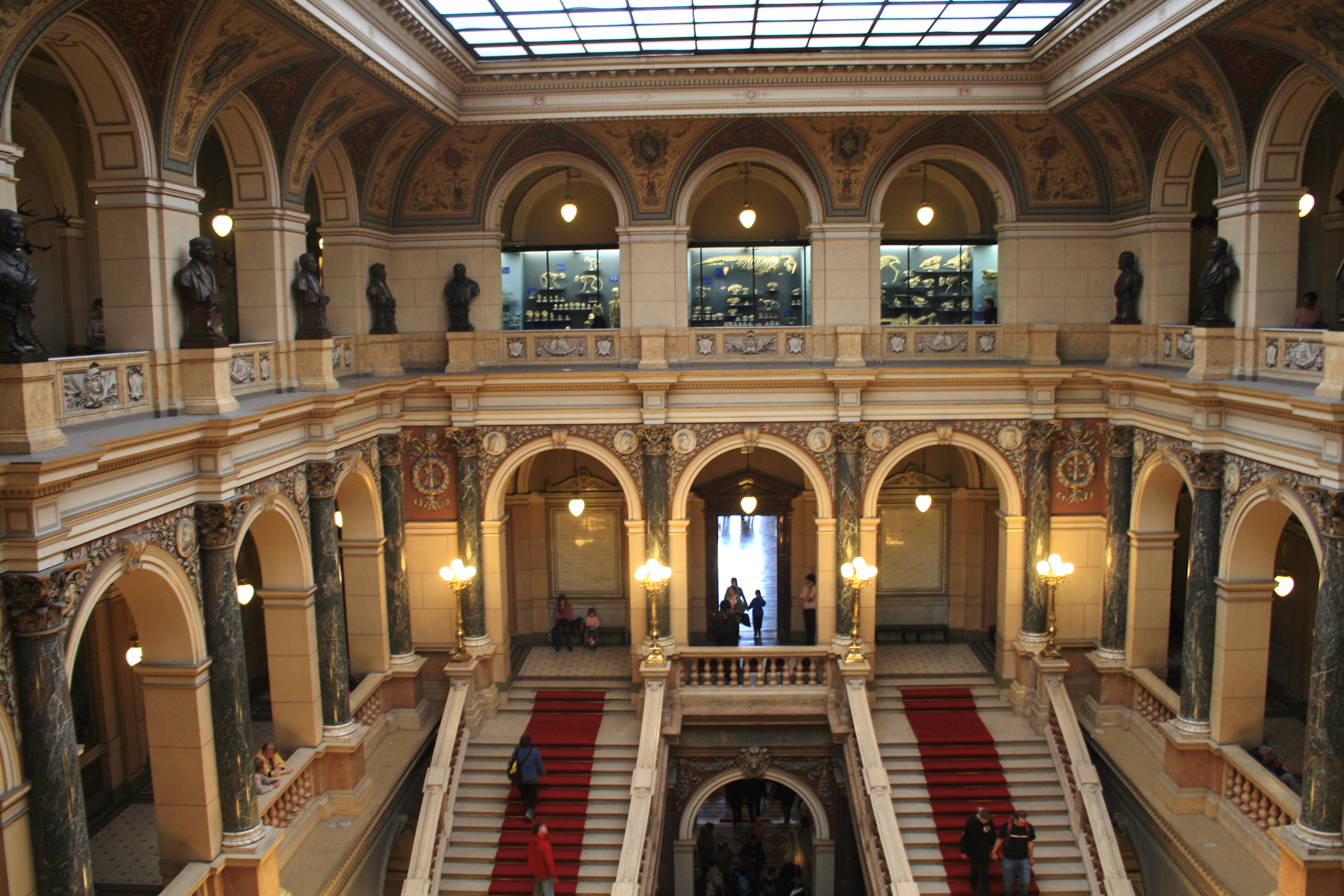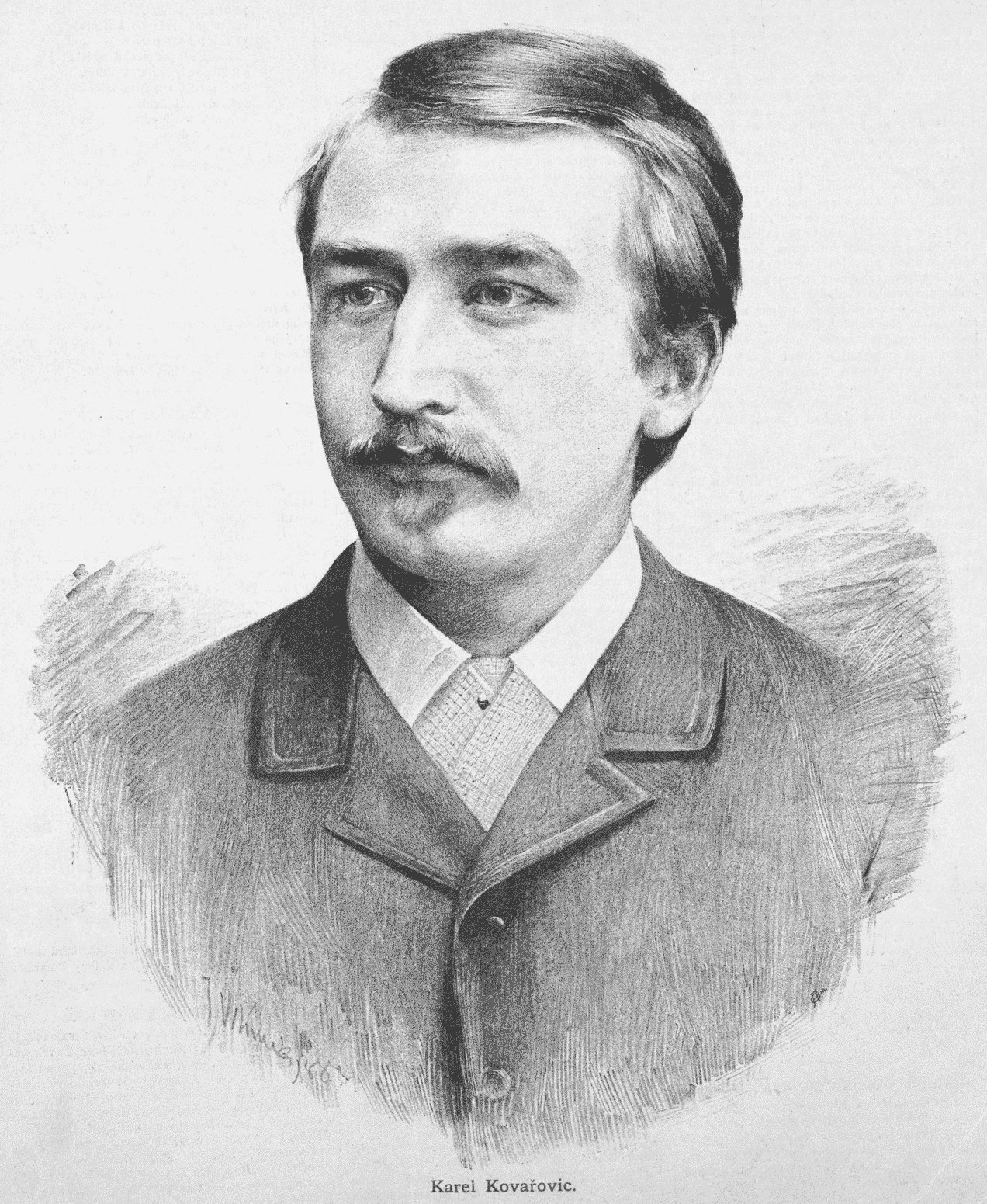|
Violin Sonata (Dvořák)
The Sonata for Violin and Piano in F major, Opus number, Op. 57 (Burghauser number, B. 106), is a violin sonata by Antonín Dvořák. The work was composed between 3 and 17 March 1880. At the time, Dvořák was also working on his Violin Concerto (Dvořák), violin concerto, and it seems that the composer explored different aspects of the violin in the two pieces. The sonata is naturally the more intimate of the two works, and appears in places to be influenced by Johannes Brahms. Dvořák played the work on 31 March 1880 with the famous violinist Joseph Joachim, who reacted positively (a contrast to Joachim's ambivalence over aspects of the Violin Concerto). The details of the first public performance are not known, though on 5 October 1881 there was an early performance at a meeting of the Prague Umělecká Beseda. On that occasion the violinist was František Ondříček (who also premiered the violin concerto), while the piano part was taken by Karel Kovařovic, later ... [...More Info...] [...Related Items...] OR: [Wikipedia] [Google] [Baidu] |
Opus Number
In music, the opus number is the "work number" that is assigned to a musical composition, or to a set of compositions, to indicate the chronological order of the composer's publication of that work. Opus numbers are used to distinguish among compositions with similar titles; the word is abbreviated as "Op." for a single work, or "Opp." when referring to more than one work. Opus numbers do not necessarily indicate chronological order of composition. For example, posthumous publications of a composer's juvenilia are often numbered after other works, even though they may be some of the composer's first completed works. To indicate the specific place of a given work within a music catalogue, the opus number is paired with a cardinal number; for example, Beethoven's Piano Sonata No. 14 in C-sharp minor (1801, nicknamed ''Moonlight Sonata'') is "Opus 27, No. 2", whose work-number identifies it as a companion piece to "Opus 27, No. 1" ( Piano Sonata No. 13 in E-flat major, 1800 ... [...More Info...] [...Related Items...] OR: [Wikipedia] [Google] [Baidu] |
Sonata Form
The sonata form (also sonata-allegro form or first movement form) is a musical form, musical structure generally consisting of three main sections: an exposition, a development, and a recapitulation. It has been used widely since the middle of the 18th century (the early Classical music era, Classical period). While it is typically used in the first Movement (music), movement of multi-movement pieces, it is sometimes used in subsequent movements as well—particularly the final movement. The teaching of sonata form in music theory rests on a standard definition and a series of hypotheses about the underlying reasons for the durability and variety of the form—a definition that arose in the second quarter of the 19th century. There is little disagreement that on the largest level, the form consists of three main sections: an exposition, a development, and a recapitulation; however, beneath this general structure, sonata form is difficult to pin down to a single model. The standa ... [...More Info...] [...Related Items...] OR: [Wikipedia] [Google] [Baidu] |
Violin Sonatas
A violin sonata is a musical composition for violin, often accompanied by a keyboard instrument and in earlier periods with a bass instrument doubling the keyboard bass line. The violin sonata developed from a simple baroque form with no fixed format to a standardised and complex classical form. Since the romantic age some composers have pushed the boundaries of both the classical format as well as the use of the instruments. The early violin sonata In the earliest violin sonatas a bass instrument and the harpsichord played a simple bass line (continuo) with the harpsichord doubling the bass line and fixed chords while the violin played independently. The music was contrapuntal with no fixed format. Georg Philipp Telemann wrote many such sonatas as did Johann Sebastian Bach. Bach also wrote sonatas with harpsichord obbligato, which freed the keyboard instrument from playing only a bass line accompaniment and allowed in to enhance the part of the soloist. He also wrote sonatas ... [...More Info...] [...Related Items...] OR: [Wikipedia] [Google] [Baidu] |
Chamber Music By Antonín Dvořák
Chamber or The Chamber may refer to: Organizations and government *Chamber of commerce, a form of business network *Legislative chamber, a deliberative assembly within a legislature *Debate chamber, a room for people to discuss and debate Arts and entertainment *Chamber (character), in Marvel comics * ''The Chamber'' (game show), an American TV show * ''The Chamber'' (novel), by John Grisham, 1994 ** ''The Chamber'' (1996 film), based on the novel * ''The Chamber'' (2016 film), a survival film * , a German musical ensemble Business * Barristers' chamber - office used by Lawyers Other uses * Chamber (firearms), part of a weapon * Combustion chamber, part of an engine in which fuel is burned * Environmental chamber, used in testing environmental conditions * Execution chamber, where capital punishment is carried out * Gas chamber, apparatus for killing humans or animals * Chambar, or Chamber, a town in Pakistan See also * Chambers (other) * Chamber music (disam ... [...More Info...] [...Related Items...] OR: [Wikipedia] [Google] [Baidu] |
National Museum (Prague)
The National Museum (NM) (Czech language, Czech: ''Národní muzeum'') is a public museum dedicated to natural scientific and historical collections of the Czech Republic, its History of the Czech lands, history, Culture of the Czech Republic, culture and Czechs, people, among others. The museum was founded in 1818 by Kaspar Maria von Sternberg, Kašpar Maria Šternberg. Historian František Palacký was also strongly involved in the foundation of the museum. The National Museum houses nearly 14 million items from the areas of natural history, history, arts, music and librarianship, which are located in dozens of museum buildings. The main hall of the National Museum is located on Wenceslas Square in downtown Prague. Built in Renaissance Revival architecture, neo-renaissance style in 1891, the building underwent significant restoration from 2011 to 2018 to mark the centennial of the Czechoslovak declaration of independence, Czech and Czechoslovak declaration of independence. Due ... [...More Info...] [...Related Items...] OR: [Wikipedia] [Google] [Baidu] |
Jarmil Burghauser
Jarmil Michael Burghauser (born Jarmil Michael Mokrý; 21 October 1921, Písek19 February 1997, Prague) was a Czech composer, conductor, and musicologist. Burghauser's parents were painters František Viktor Mokrý and Zdenka Burghauserová. He studied piano since he was 6 years old under Jaroslav Křička and later Otakar Jeremiáš. He continued his musical education by studying composition with Václav Talich at Prague Conservatory. From 1948 to 1953 Burghauser was a choirmaster in National Theatre. After the short-lived Prague Spring, he incurred the disfavor of his country's Communist regime and had to adopt the pseudonym Michal Hájků in order to write a series of compositions in a style which evoked earlier periods of music, called ''Storia apocrifa della musica Boema''. Works Operas * ''Alladina and Palomid'' (1943–1944) * ''The Miser'' (1949) * ''Karolinka a lhář'' (1950–1953) * ''The Bridge'' (1963–1964) Ballets * ''Honza a čert'' (1954) * ''The Servant ... [...More Info...] [...Related Items...] OR: [Wikipedia] [Google] [Baidu] |
List Of Compositions By Antonín Dvořák
This list of compositions by Antonín Dvořák includes works sortable by Jarmil Burghauser catalogue number (B.), opus number In music, the opus number is the "work number" that is assigned to a musical composition, or to a set of compositions, to indicate the chronological order of the composer's publication of that work. Opus numbers are used to distinguish among ... (when applicable), date of composition, titles, and genre. List External links Complete list on a comprehensive Dvorak site* {{DEFAULTSORT:List of compositions by Antonin Dvorak Dvorak Dvorak Dvorak ... [...More Info...] [...Related Items...] OR: [Wikipedia] [Google] [Baidu] |
Opus Number
In music, the opus number is the "work number" that is assigned to a musical composition, or to a set of compositions, to indicate the chronological order of the composer's publication of that work. Opus numbers are used to distinguish among compositions with similar titles; the word is abbreviated as "Op." for a single work, or "Opp." when referring to more than one work. Opus numbers do not necessarily indicate chronological order of composition. For example, posthumous publications of a composer's juvenilia are often numbered after other works, even though they may be some of the composer's first completed works. To indicate the specific place of a given work within a music catalogue, the opus number is paired with a cardinal number; for example, Beethoven's Piano Sonata No. 14 in C-sharp minor (1801, nicknamed ''Moonlight Sonata'') is "Opus 27, No. 2", whose work-number identifies it as a companion piece to "Opus 27, No. 1" ( Piano Sonata No. 13 in E-flat major, 1800 ... [...More Info...] [...Related Items...] OR: [Wikipedia] [Google] [Baidu] |
Rondo
The rondo or rondeau is a musical form that contains a principal theme (music), theme (sometimes called the "refrain") which alternates with one or more contrasting themes (generally called "episodes", but also referred to as "digressions" or "couplets"). Some possible patterns include: Musical_form#Labeling_procedures, ABACA, ABACAB, ABACBA, or ABACABA (with the letter 'A' representing the refrain). The rondo form emerged in the Baroque music, Baroque period and became increasingly popular during the Classical period (music), Classical period. The earliest examples of compositions employing rondo form are found within Italian operatic arias and choruses from the first years of the 17th century. These examples use a multi-couplet rondo or "chain rondo" (ABACAD) known as the Italian rondo. Rondo form, also known in English by its French spelling rondeau, should not be confused with the unrelated but similarly-named Formes fixes, forme fixe Rondeau (forme fixe), rondeau, a 14th- an ... [...More Info...] [...Related Items...] OR: [Wikipedia] [Google] [Baidu] |
Karel Kovařovic
Karel Kovařovic (9 December 1862 6 December 1920) was a Czech people, Czech composer and conductor from Prague. Life From 1873 to 1879 he studied clarinet, harp and piano at the Prague Conservatory.''Dopisy o životě hudebním i lidském, p. 484'' He began his career as a harpist. In 1900 Kovařovic became the conductor of the Prague National Theatre, national theatre in Prague, due mostly to the success of his opera ''Psohlavci (opera), Psohlavci (The Dogheads)'', after the novel of the same name (about Jan Sladký Kozina) by Alois Jirásek. His engagement at the National Theatre lasted twenty years, until 1920. He composed seven operas. Kovařovic is most remembered today for the revisions he made to Leoš Janáček's ''Jenůfa'' for its premiere in Prague, and it was in his version that the opera was heard for many years. A recording of ''The Dogheads'', featuring Beno Blachut, exists. Compositions Orchestra * 1880 ''Předehra veseloherní (Comic overture)'' * 1883 ... [...More Info...] [...Related Items...] OR: [Wikipedia] [Google] [Baidu] |
Burghauser Number
Jarmil Michael Burghauser (born Jarmil Michael Mokrý; 21 October 1921, Písek19 February 1997, Prague) was a Czech composer, conductor, and musicologist. Burghauser's parents were painters František Viktor Mokrý and Zdenka Burghauserová. He studied piano since he was 6 years old under Jaroslav Křička and later Otakar Jeremiáš. He continued his musical education by studying composition with Václav Talich at Prague Conservatory. From 1948 to 1953 Burghauser was a choirmaster in National Theatre. After the short-lived Prague Spring, he incurred the disfavor of his country's Communist regime and had to adopt the pseudonym Michal Hájků in order to write a series of compositions in a style which evoked earlier periods of music, called ''Storia apocrifa della musica Boema''. Works Operas * ''Alladina and Palomid'' (1943–1944) * ''The Miser'' (1949) * ''Karolinka a lhář'' (1950–1953) * ''The Bridge'' (1963–1964) Ballets * ''Honza a čert'' (1954) * ''The Ser ... [...More Info...] [...Related Items...] OR: [Wikipedia] [Google] [Baidu] |
František Ondříček
František Ondříček (29 April 1857 – 12 April 1922) was a Czech violinist and composer. He gave the first performance of the Violin Concerto by Antonín Dvořák, and his achievements were recognised by the rare award of honorary membership of the Philharmonic Society of London (now the Royal Philharmonic Society) in 1891. His younger brother Karel Ondříček (b. 1865) for a while lead the orchestra of the National Theatre, Prague, and was to go on to have a successful musical career in the USA. František Ondříček was born in Prague, the son of the violinist and conductor Jan Ondříček. He studied at the Prague Conservatory under Antonín Bennewitz, and was then supported by Henryk Wieniawski through two years studying at the Paris Conservatoire with Lambert Massart. He shared a first prize with Achille Rivarde. He was the soloist in the first performance of Dvořák's Violin Concerto, Op. 53 in Prague on 14 October 1883, and performed it again in Vienna on ... [...More Info...] [...Related Items...] OR: [Wikipedia] [Google] [Baidu] |




